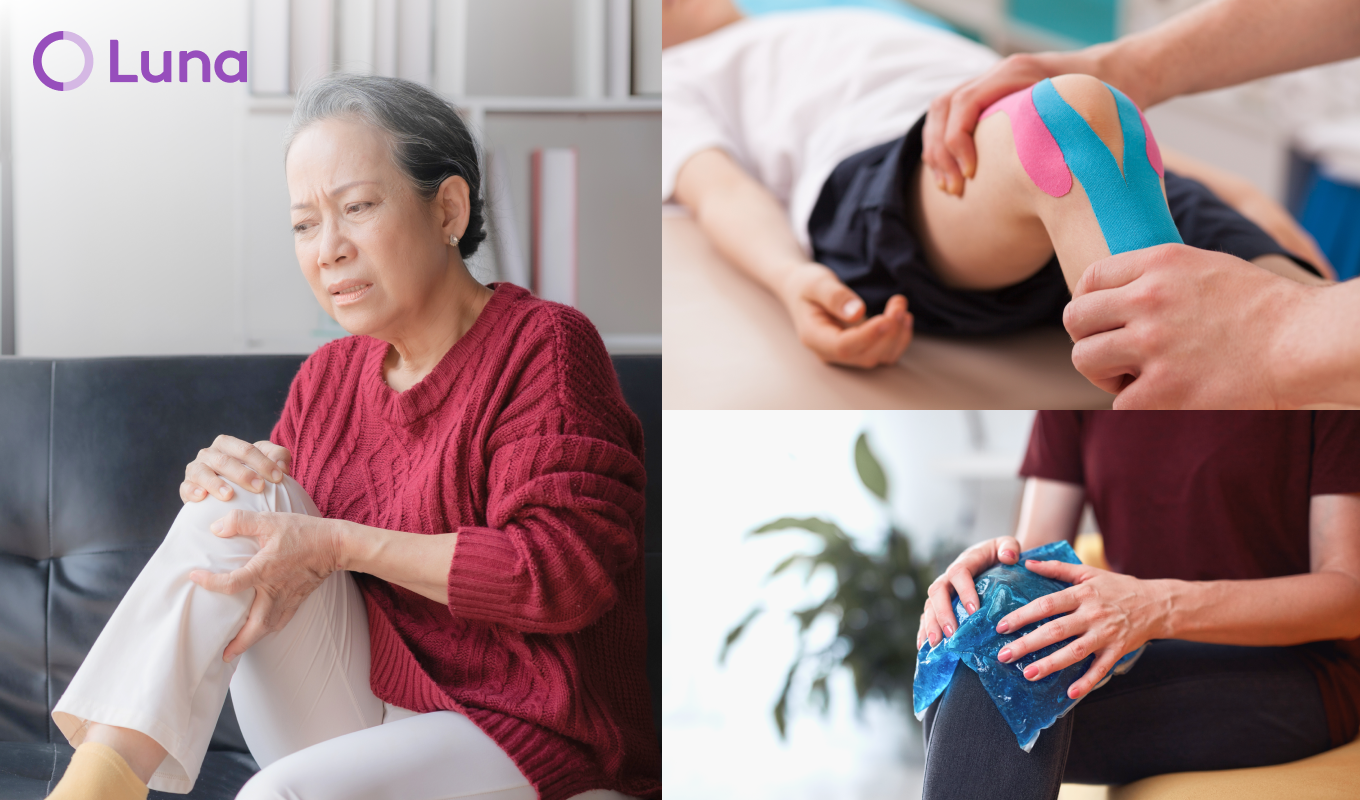Pelvic pain, often accompanied by afflictions like incontinence, is a common concern that affects one in four women. While it’s prevalent, pelvic pain should not be considered typical, nor should it be ignored.

Pelvic pain is your body’s way of alerting you to a problem. Neglecting it can lead to complications. But here’s the good news – physical therapy can be an effective treatment option for those experiencing pelvic discomfort, offering not just relief but
also a significant improvement in your quality of life.
What is Pelvic Pain?
Pelvic pain can affect both men and women, though it’s more commonly reported in women. It refers to discomfort in the lower abdominal area, ranging from mild to severe. It can be acute or chronic and may result from various conditions such as endometriosis,
pelvic inflammatory disease, interstitial cystitis, or musculoskeletal problems. Chronic pelvic pain is pain that lasts for six months or longer, and it can significantly affect physical and emotional well-being.

- Pressure or heaviness in the pelvic area
- Pain during urination or bowel movements
- Discomfort during sexual intercourse
- Lower back or abdominal pain
- Urinary symptoms (pain or burning sensation during urination, frequent urination, or difficulty emptying the bladder)
Causes of Pelvic Pain
The pelvic floor is a hammock of muscles that support your bladder, uterus (in females), and rectum. When these muscles become weak, tight, or imbalanced, it can be the result of:
- Muscle Tension or Weakness in the Pelvic Floor: Muscle imbalances can lead to chronic pain and dysfunction.
- Pregnancy and Childbirth: The process of carrying and delivering a baby can stretch and weaken
the pelvic floor muscles, leading to pain and incontinence.
- Endometriosis: Affects about 1 in 10 women of reproductive
age globally. It’s a common cause of chronic pelvic pain due to the growth of endometrial-like tissue outside the uterus.
- Uterine Fibroids: These noncancerous growths in the uterus are very common, especially in women in their 30s and 40s. About 70-80% of women will have fibroids by age 50,
though not all will experience symptoms like pelvic pain.
- Pelvic Inflammatory Disease (PID): A significant cause of pelvic pain, particularly among young women. It is estimated that more than 1 million women in the United States experience an episode of PID annually.
- Irritable Bowel Syndrome (IBS): Affects about 10-15% of the global population and can cause pelvic pain due to its gastrointestinal
symptoms. It is more common in women than in men.
- Urinary Tract Infections (UTIs): Common in women, with about 50-60% of women experiencing a UTI at least once in their lives. UTIs can cause significant pelvic pain and discomfort.
- Prostatitis in Men: Inflammation of the prostate gland can cause pelvic pain and urinary symptoms.
- Stress and Anxiety: Emotional stress can lead to muscle tension and exacerbate pain symptoms in the pelvic region.
- Sexual Assault or Abuse: Women who have experienced sexual violence are at a higher risk of developing chronic pelvic pain. The trauma can lead to both physical and psychological impacts that exacerbate pain symptoms.
It’s wise to consult a healthcare professional, like a physical therapist who specializes in pelvic health, to determine the underlying cause of your pelvic pain and develop an appropriate treatment plan.

Sexual Assault and Pelvic Pain
Pelvic pain is often linked to a history of sexual assault or abuse. Research indicates that women who have experienced sexual violence are at
a higher risk of developing chronic pelvic pain. Studies have found that:

Between 30% and 50% of women who suffer from chronic pelvic pain report having a history of sexual or physical abuse in their past.

Survivors of sexual assault often experience higher levels of pelvic pain and related conditions such as endometriosis and interstitial cystitis. The trauma can lead to both physical and psychological impacts that exacerbate pain symptoms.

The experience of sexual abuse can lead to alterations in the nervous system and pain perception, contributing to chronic pain conditions. Emotional and psychological distress from the trauma can also amplify physical pain responses.
Recognizing the link between pelvic pain and a history of sexual abuse is crucial for healthcare providers to offer appropriate and sensitive care. Early intervention and trauma-informed care approaches can significantly improve outcomes for these patients.
Why Women Avoid Seeking Care for Pelvic Pain
Understanding the barriers that prevent women from seeking care for pelvic pain is crucial. Many women experience feelings of embarrassment or shame, which can make it difficult to reach out for help. Here are some common reasons:

Pelvic pain, especially when it involves intimate areas like the pelvic floor or reproductive organs, can be incredibly difficult to discuss. Many women feel embarrassed talking about symptoms that affect their genitals or urinary functions, leading them
to avoid medical consultations. It’s important to remember that you are not alone, and your health professionals are here to support you without judgment.

There is often a lack of information about pelvic pain conditions and the treatments available. Many women might not realize that their symptoms are treatable or that seeking medical help can lead to significant improvement. Educating yourself and understanding
that help is available can be empowering.

Women sometimes accept pelvic pain as a normal part of life, whether it’s due to menstruation, childbirth, or aging. However, persistent pain is not something you have to live with, and professional help can make a world of difference.

Past experiences where pain was minimized or misunderstood can discourage women from seeking help again. It’s vital to find a compassionate healthcare provider who listens to you and takes your pain seriously.

The intimate nature of pelvic exams and discussions about sexual health can be a barrier. Concerns about privacy and personal discomfort can make it hard to seek care. Remember that healthcare providers are trained to handle these topics with sensitivity
and respect.
Addressing these barriers through education, improving healthcare provider training, and fostering a supportive and non-judgmental environment can help women feel more comfortable seeking the care they need.
How Physical Therapy Can Help
Physical therapy is a highly effective treatment for managing and alleviating pelvic pain. A physical therapist specializing
in pelvic health can assess your condition, identify the underlying causes, and develop a personalized treatment plan.


- Pelvic Floor Muscle Training: Strengthening and relaxing the pelvic floor muscles can alleviate pain and improve bladder control, reducing incontinence and stress incontinence.
- Manual Therapy: Hands-on techniques can help release tension, improve blood flow, and reduce pain in the pelvic region.
- Biofeedback: This method uses sensors to provide real-time feedback on pelvic floor muscle activity, helping you learn how to control these muscles more effectively.
- Education and Lifestyle Modifications: Learning about proper body mechanics, posture, and dietary changes can also help manage symptoms and prevent future pain.
These interventions aim to strengthen weak muscles, relax tense muscles, improve circulation, and promote overall pelvic health.
The Benefits of In-Home Physical Therapy
Opting for in-home physical therapy offers several advantages over visiting
a physical therapy clinic, especially for those dealing with pelvic pain:
- Comfort and Convenience: Receiving treatment in the comfort and privacy of your own surroundings can reduce anxiety associated with the therapy itself, allowing you to feel more at ease while receiving treatment.
- Personalized Attention: With in-home care, you receive the therapist’s undivided attention during your entire session. This allows for a more tailored approach and a chance to ask questions in a relaxed environment.
- Privacy: Pelvic pain can be a sensitive topic. In-home therapy offers a discreet way to receive treatment without the worry of encountering others in a public setting.
- Flexibility: Scheduling in-home therapy sessions can be more flexible and accommodating to your lifestyle and needs.

You deserve to live a life free from pelvic pain and the limitations of incontinence. Luna’s experienced and compassionate therapists are here to help you achieve that. We
understand the unique challenges associated with pelvic pain and are dedicated to providing you with personalized care in the comfort of your own home.
By choosing Luna, you’ll benefit from:
- Experienced therapists specializing in pelvic health
- Convenient, in-home treatment sessions
- Personalized care plans tailored to your specific needs
- Flexible scheduling options
- Insurance coverage for qualified individuals
Don’t let pelvic pain impact your quality of life any longer. Learn how Luna works and schedule your in-home consultation today. Our team of expert physical therapists
is ready to provide compassionate, effective care in the comfort of your own home.









